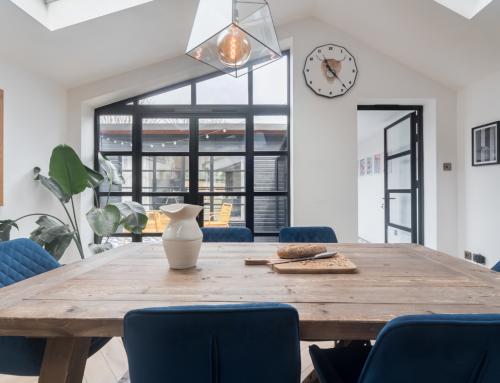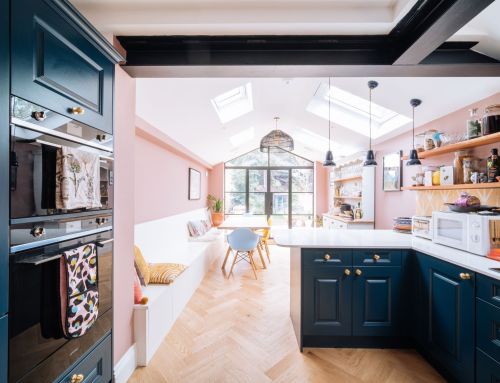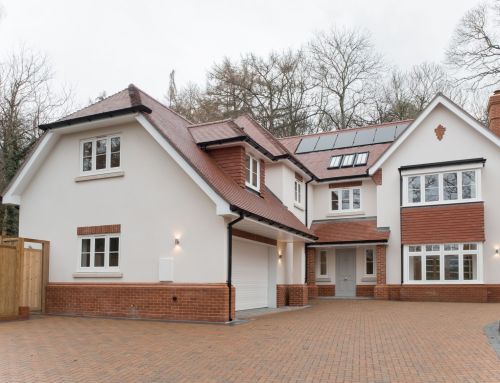Home Extension: where do I start?
In the current ‘race for space‘, extending your home is a popular way to increase space and add value to your property. With uncertainty on costs a lack of availability, moving house in 2021 comes at a cost – from legal fees to stamp duty – creating your own space and improving your existing home could be the most viable option. But where to start?
Whether you’re thinking of a garage extension, side extension, double or single storey rear extension, at Fluent we understand that there is much to consider. Before you jump in and embark on an improvement project to expand your home, we have some tips to share with you. From start to finish we’ve outlined the key elements for you to consider and help you plan your perfect extension.
What to consider before you start
What do you need and will your plans add value?
In our experience with any big home improvement project, it’s worth sense checking your plans before you get cracking. It’s worth taking a look around your neighbourhood to see what others have done. Where it’s obvious of course! You may spot loft conversions or home extended at the side or back. If you have friendly estate agents they could be useful in providing an indication of how much a home extension would increase the value.
You can of course conduct an online search of local properties which may help inform your budgeting for the project. If you are ready to start then we can provide a pre-planning check for you.
Permitted development and planning permission
It’s quite common that many homes can be pre-approved for house extensions without the need for planning permission, you can read more here about “permitted development rights”.
As a basic guide, a rear wall of a detached home can be extended by 8m to the rear if it is a single storey property, and 3m if it is a double storey. This is reduced to 6m in a semi or terraced house.
There are also height restrictions: a single storey extension not being higher than 4m in height to the ridge and the eaves, and ridge heights of any extension not being higher than the existing property. And double storey extensions mustn’t be closer than 7m to the rear boundary.
There are other conditions that must be met. For example, if the extension is more than half the area of land around the original house, you will need planning permission. Extensions must be built with similar materials to the existing property. Find out whether or not plans fall under the permitted development guidelines.
Different planning rules may also apply if your home is in a Conservation Area, and for any renovations to a Listed Property, you will need to obtain listed building consent.
Sometimes difficulties arise getting planning permission. If you are unsure or have problems in getting planning permission then we’d be happy to help.
Building regulations
Regardless of whether or not planning permission is required, any renovation project must comply with building regulations. You’ll need to ensure that your builder can either self-certify the work they do (for example, FENSA accredited window fitters, Gas Safe registered gas engineers and NICEIC registered electricians and so on) or use Fluent as we will liaise with the local Building Control Officers at your council to have their work certified.
It’s really important that the requirements are met. If you don’t then it’s possible that you could be served with a notice to take the extension down. This may also create problems down the line when it comes to selling your home and you don’t have the correct Building Regulations certificates.
Your insurance provider
Before starting any project, it’s probably a really good idea to contact your home and contents insurance provider to advise them of your plans. Any changes to your existing house will likely increase the rebuild cost of your house – which insurers take into account when pricing premiums – while any building work could put the property at risk of damage. If you don’t let your insurer know and there’s a problem with the property at some point you may find your policy is void. Your insurer will let you know if your current policy will cover the new extension. You may find your premiums increase. If for some reason they are unable to cover the property now you’ll need to find a new provider before your cover is cancelled.
You should also check that any builder working on your property has professional indemnity insurance to cover the costs should something go wrong.
Leaseholders
If you own the leasehold – rather than freehold – to your property, you’ll want to check the details of your lease to ensure you have the right to make alterations, usually subject to approval from the freeholder. Get in touch sooner rather than later with your freeholder about your plans, as there may be additional costs involved to obtain their approval and sign-off. See when to approach your freeholder about your extension plans
Your neighbours
Building projects can be a major cause of disputes between neighbours. If planning permission is required, your neighbours will be consulted by the local planning authority, but before a notification arrives, it’s a good idea to let them know about your plans well in advance, particularly if the works may cause disruption. Happy neighbours help a happy build!
Party Wall Agreement
Party time, yay! If only it were that exciting…So what is a party wall and why do you need to know.
A party wall is the shared wall, usually between a terrace or semi-detached house, and divides the homes of two separate owners. It also includes garden walls built over a boundary and excavations close to a neighbour’s property (within three or six meters, depending on the depth of the new foundations).
Party Wall Agreements between neighbours are most commonly needed for loft conversions and extensions which require the insertion of steel supports, a damp proof course and/or digging of new foundations.
Read our guide about Party Wall Agreements by clicking this link.
Designing an extension
Finding an architect
Job done! You’ve found us here at Fluent and we’ll support you all the way through your project. Our experienced in house team are based in Sunbury on Thames. We have extensive knowledge with planning and design in the local area including working with all the local authorities.
There’s no law saying you need to use an architect, even for large renovations and builds, you can read more here about the differences between architects and architectural designers.
Choosing a builder
The key to any successful home improvement project is professional, reliable trusted tradesmen. Online review sites are a good place to start when comparing builders and other contractors. We’ve partnered with Checkatrade because of their vetting and review service. You can read more in our guide here.
Building Costs
Getting quotes for the build
As with any service, it’s always a good idea to shop around. We’d always recommend getting at least three quotes from three different contractors for the work. You’ll usually need to ask at least five firms to get three quotes. Find out how to invite contractors to tender for the work
Setting a budget
When setting a budget for your job start by making a list of everything you would like included (bear in mind the cost of a two story extension is not that different to a single story structure as most of the cost is in the foundations). Compare your quotes item by item and when pricing services and materials always check the VAT is included in the costs.
We’d also recommend setting aside around 10% of the total cost for unexpected additional extension costs.
You will also need to work out the best way of funding the cost of your home improvement project. Remortgaging or a home improvement loan may be cheaper than the cost of moving home right now.






